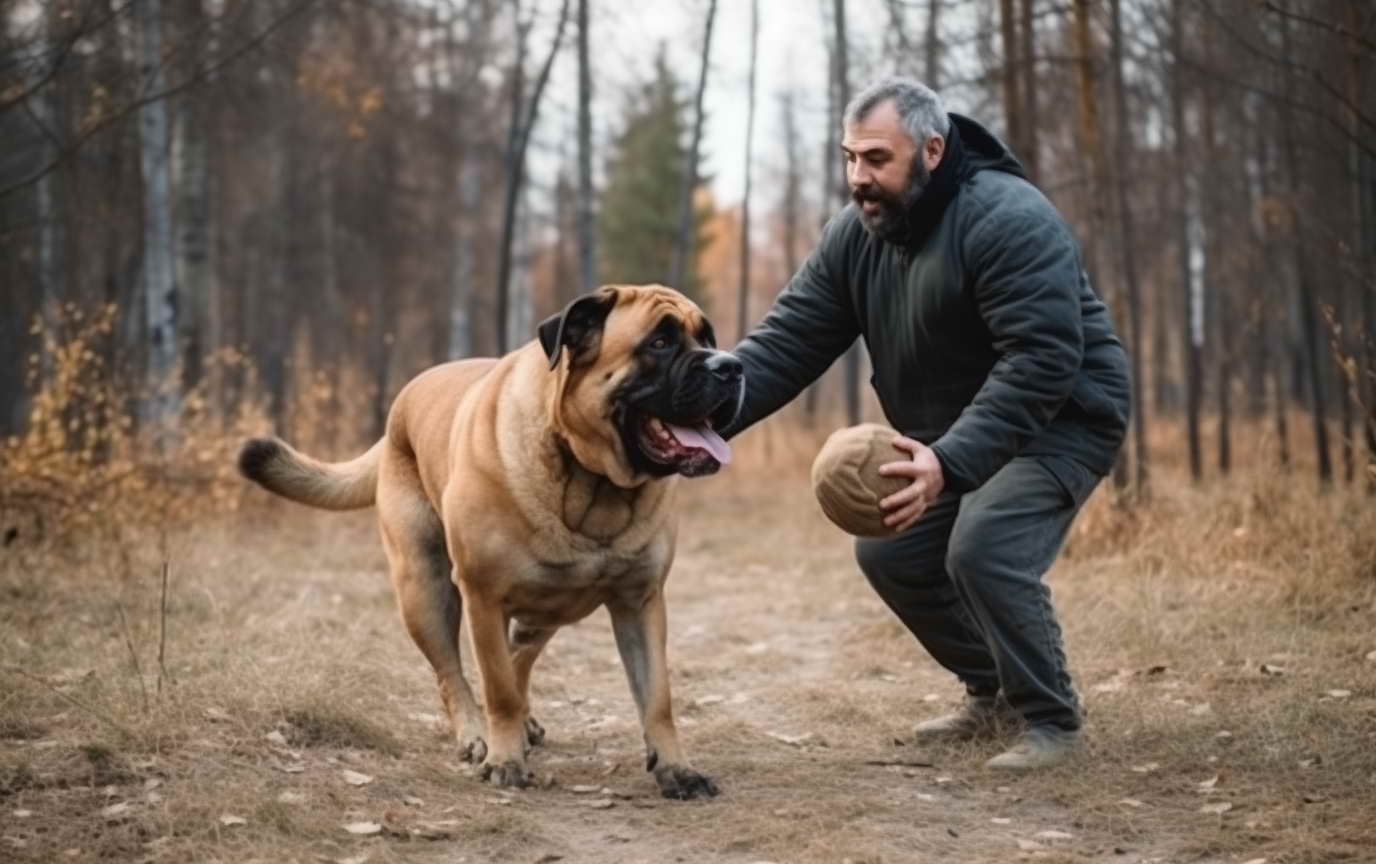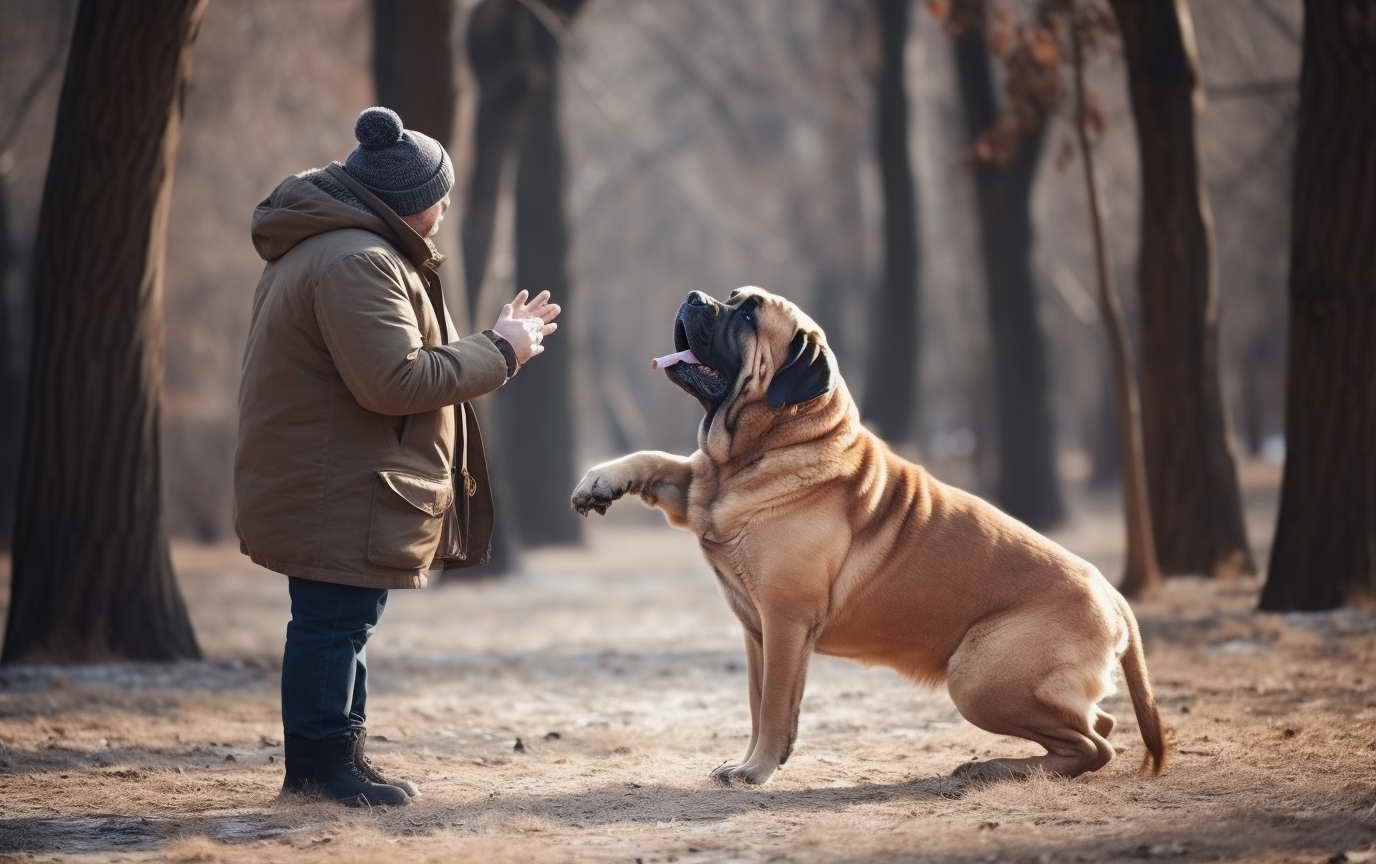
Big Mastiff
PETSIDI – The mastiff is considered one of the largest dog breeds in the world. Mastiffs are massive, powerful dogs that can weigh up to 200 pounds and stand over 30 inches tall at the shoulder. Despite their imposing size, mastiffs have a gentle and affectionate temperament and make wonderful family companions.
History of the Mastiff Breed
Mastiffs have an ancient history that can be traced back over 5,000 years. They are one of the oldest dog breeds in existence today. Mastiffs originated in Central Asia and were brought to Europe by Phoenician traders.
In England, mastiffs were used as war dogs because of their size and strength. They would charge enemy soldiers in battle and help protect English castles. Mastiffs continued to be used as guardians and protectors for centuries in England.
During the 19th century, interest in pedigree dogs began to grow. The English mastiff and other mastiff breeds started to be bred more selectively for appearance and temperament. Mastiffs became popular as estate guard dogs among the aristocracy in England.
Today, mastiffs are still excellent watchdogs but are mainly bred as gentle family pets. There are over 14 recognized mastiff breeds throughout the world. Some of the most popular include:
- English mastiff – Originated in England, this is one of the largest mastiff breeds. An average male can reach 160-230 pounds.
- Tibetan mastiff – This ancient breed originated as a guardian and herding dog in Tibet. They have a long, thick double coat.
- Bullmastiff – A mix between the English mastiff and Old English Bulldog created in the 1800s as estate guardians.
- French mastiff – Includes breeds like the Dogue de Bordeaux and Bordeaux mastiff. Typically weigh 90-145 pounds.
- Italian mastiff – The Cane Corso and Neapolitan mastiff are Italian breeds that descend from Roman war dogs.

Size and Appearance
One thing that stands out about mastiffs is their sheer massive size. Most mastiff breeds weigh at least 130-200 pounds as adults.
The English mastiff is one of the heaviest dogs in the world. Here are some key facts about their size:
- The average height for males is 30 inches, females slightly smaller at 27.5 inches.
- Weight ranges from 150-230 pounds on average.
- The heaviest English mastiff ever recorded weighed 343 pounds!
Other large mastiff breeds like the Spanish mastiff, Tibetan mastiff, and Bullmastiff can also weigh well over 150 pounds.
In terms of appearance, mastiffs generally have these physical traits:
- Large, broad heads with hanging folds and dewlaps around the face and neck.
- Powerful, muscular bodies with a heavy bone structure.
- Short coat that can be fawn, brindle, black, or apricot.
- The black face mask is common in many mastiff breeds.
Below is a table summarizing the general size and weight of popular mastiff breeds:
| Breed | Average Weight | Average Height |
|---|---|---|
| English Mastiff | 160-230 lbs | 27.5-30 in |
| Bullmastiff | 100-130 lbs | 25-27 in |
| Tibetan mastiff | 90-150 lbs | 26-30 in |
| French mastiff | 100-145 lbs | 25-30 in |
| Italian mastiff | 90-150 lbs | 24-28 in |
Temperament
Despite their intimidating appearance, mastiffs have a calm, dignified, and loyal temperament. They are not aggressive dogs by nature. With proper training and socialization from a young age, mastiffs make wonderful gentle giants.
Here are some key facts about the mastiff temperament:
- Extremely devoted and affectionate with family. Gentle and patient with children.
- Loyal watchdogs who are protective of home and family. Will alert bark to warn intruders.
- Require early socialization to prevent territorial behavior and aggression toward strangers.
- Mastiffs tend to be calm indoors. Short bursts of exercise will satisfy them.
- Independent thinkers but aim to please owners. Respond best to positive reinforcement training.
- Some drooling and snoring are to be expected with their loose facial skin.
- Overall great choice for an all-around family dog and estate guardian.
Mastiffs do have strong protective instincts though, so they require extensive socialization starting as a puppy. With the proper raising, these gentle giants are great playmates for children and will watch over family members.

Grooming and Care
Mastiffs are relatively low maintenance when it comes to grooming needs. Their short coat requires only weekly brushing to remove dead hair.
Here are some other tips for properly caring for a mastiff:
- Only occasional bathing is needed – mastiffs can develop skin problems from over-bathing.
- Ears should be checked weekly for infection and cleaned out with a dog earwash.
- Wrinkles on the face/neck need cleaning daily to prevent infections from moisture buildup.
- Mastiffs drool! Be prepared to wipe up slobber regularly with a damp cloth.
- Nails should be trimmed every 2-3 weeks to prevent cracks and splitting.
Due to their large size, mastiffs also have some special exercise and health considerations:
- Require moderate daily exercise to prevent obesity – short 20-30 minute walks are sufficient.
- Prone to overheating – avoid strenuous activity in hot weather. Access to shade and water is a must.
- Susceptible to hip dysplasia – buy from reputable breeders who test breeding stock.
- Can suffer from gastric dilatation volvulus bloat – don’t allow vigorous exercise after eating.
With proper preventative care and vet checkups, a healthy mastiff can live 8-12 years. Providing the right diet, exercise regimen, and home environment is key to having a happy mastiff.
Finding a Mastiff Puppy or Rescue
Decided a mastiff might be the right massive but gentle dog for you? Here are some tips on finding a mastiff puppy or rescue dog:
- Seek out reputable mastiff breeders – visit kennels, attend dog shows, check breed club referrals.
- Good breeders will screen breeding stock for health/temperament and provide health certifications.
- Be prepared to spend $1,500-$2,500 or more for a mastiff puppy from a quality breeder.
- Consider mastiff rescue groups to adopt an adult – many surrender dogs due to size.
- Rescued mastiffs make wonderful pets but require patience for training and socialization.
- Use caution when looking at online ads – be wary of puppy mills or irresponsible backyard breeders.
Patience and research are key to finding a healthy, well-bred mastiff. A responsible breeder or rescue will provide support and resources to help you raise your new giant puppy or adult mastiff.
Fun Facts About Mastiffs
To wrap up this overview of the magnificent mastiff breeds, here are some fun historical facts about these gentle giants:
- Lyme Hall Mastiffs were featured on the label of Hush Puppies shoes in the 1950s.
- English mastiffs are descended from ancient Roman war dogs and early Greek Molosser breeds.
- In the Harry Potter books, Hagrid’s dog Fang is described as a “boarhound” which is an archaic name for mastiffs.
- Mastiffs guarded nobles and aristocrats in England – Sir Peers Legh had his pack of Lyme Hall mastiffs.
- The ancient Tibetan mastiff is considered a national treasure in China but numbers are declining.
- Mastiffs are nicknamed the “gentle giant” for their placid nature despite their intimidating bulk.
- Presidents Roosevelt, Grant, and Jefferson all owned mastiff-breed dogs.
So there you have it – a comprehensive overview of this ancient breed of massive yet good-natured dogs. With proper socialization, training, and responsible ownership, a mastiff can make for a loving lifelong companion. Their protective instincts and intimidating size may not be for everyone, but these giant breeds will forever hold a special place in dog lover’s hearts.
Leave a Reply